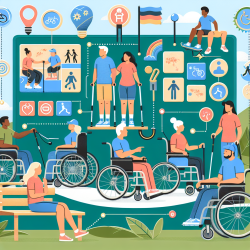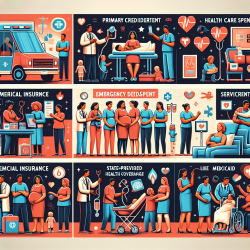Introduction
Outdoor physical activities (PA) offer numerous benefits for physical, mental, and emotional well-being. However, adults with mobility disabilities often face significant barriers to participating in these activities. A recent scoping review titled Adaptive outdoor physical activities for adults with mobility disability: a scoping review sheds light on the factors that facilitate or hinder participation in adaptive outdoor PA. This blog explores how practitioners can leverage these findings to enhance their skills and create more inclusive environments.
Understanding the Barriers and Facilitators
The scoping review identified 37 factors affecting participation in adaptive outdoor PA, categorized into four levels based on the Social Ecological Model (SEM): intrapersonal, social-environmental, physical-environmental, and policy-related. Key barriers include lack of awareness, limited access to equipment, and insufficient environmental accessibility. Facilitators include supportive social environments and innovative program designs.
Implementing Universal Design Principles
The study also categorized 11 design suggestions according to the seven principles of Universal Design (UD), which aim to create inclusive and accessible environments. These principles include:
- Equitable Use
- Flexible Use
- Simple and Intuitive
- Perceptible Information
- Tolerance for Error
- Low Physical Effort
- Size and Space for Approach and Use
By applying these principles, practitioners can design adaptive outdoor PA programs that accommodate diverse needs and promote greater participation among individuals with mobility disabilities.
Encouraging Further Research and Innovation
Despite the insights provided by the scoping review, gaps remain in our understanding of how to best implement inclusive outdoor PA interventions. Practitioners are encouraged to engage in further research, focusing on strategies that address identified gaps, particularly at the social and environmental levels. Involving individuals with mobility disabilities in the design process can provide valuable insights into their needs and preferences.
Conclusion
Adaptive outdoor physical activities hold immense potential to improve the quality of life for adults with mobility disabilities. By understanding and addressing the barriers and facilitators identified in the scoping review, and by applying Universal Design principles, practitioners can create more inclusive and accessible outdoor environments. To read the original research paper, please follow this link: Adaptive outdoor physical activities for adults with mobility disability: a scoping review.










